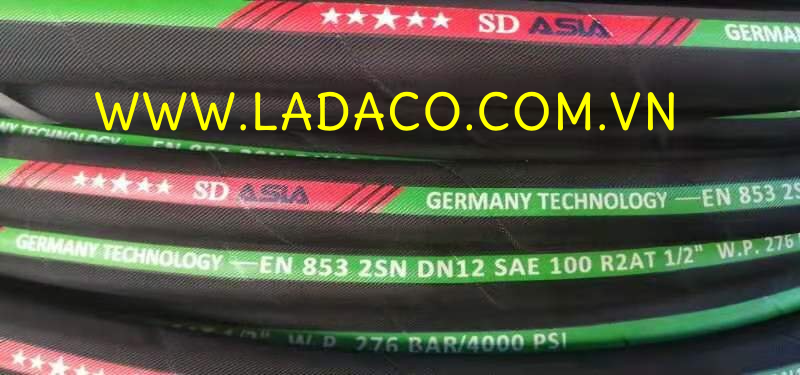Chưa phần loại
LÀM THẾ NÀO ĐỂ CHỌN ĐÚNG ỐNG THUỶ LỰC? How to Choose the Right Hydraulic Hose?
Làm thế nào để chọn đúng ống thủy lực?

Khi chọn ống thủy lực cho một ứng dụng, có một số yếu tố cần xem xét để đảm bảo sản phẩm đã chọn hoạt động như dự định. Thuật ngữ “STAMPED” đóng vai trò QUYẾT ĐỊNH:
S – Kích thước: Xác minh đường kính bên trong và chiều dài cần thiết để chọn ống thủy lực để duy trì áp suất hệ thống ổn định và đáng tin cậy mà không làm quá tải hệ thống hoặc mất áp suất. Sử dụng máy ghi kích thước để cho phép lựa chọn kích thước phù hợp để có tuổi thọ tối đa trên mọi thiết kế hệ thống mới.
T – Nhiệt độ: Xem xét phạm vi nhiệt độ của chất lỏng thủy lực bên trong và môi trường bên ngoài mà ống sẽ tiếp xúc. Vật liệu ống phải có khả năng chịu được nhiệt độ vận hành cao nhất và thấp nhất.
A – Ứng dụng: Phân tích ứng dụng mà ống sẽ được sử dụng. Một số ứng dụng sẽ yêu cầu tính linh hoạt hoặc độ bền cao hơn.
M – Vật liệu: Xác định các tính chất hóa học của chất lỏng và môi trường thủy lực. Điều quan trọng là sử dụng các vật liệu tương thích cho ống bên trong, cũng như các thành phần khác của bộ thủy lực, bao gồm nắp, vòng đệm và ốc vít.
P – Áp suất: Thiết lập áp suất hoạt động tối đa điển hình của hệ thống và bất kỳ khả năng biến động áp suất nào. Ống mềm phải có khả năng chịu được áp suất vận hành cao nhất và thấp nhất đồng thời nhận biết được tần số và cường độ của bất kỳ đợt tăng nào trong hệ thống.
E – Ends: Xác định các kết nối cuối cần thiết. Kết nối phải kết nối đúng với các cổng hệ thống để tránh rò rỉ và các vấn đề về hiệu suất khác.
D – Giao hàng: Xác định có bao nhiêu ống được yêu cầu và khi nào chúng nên được giao.

How to Choose the Right Hydraulic Hose
When selecting a hydraulic hose for an application, there are several factors to consider ensuring the chosen product performs as intended. The term “STAMPED” serves as an appropriate mnemonic device:
- S — Size: Verify the inner diameter and length required to select a hydraulic hose that will maintain constant and reliable system pressure without the risk of overloading the system or losing pressure. Use the Jason sizing nomograph to allow proper size selection for maximum life on any new system design.
- T — Temperature: Consider the temperature range of the internal hydraulic fluid and external environment to which the hose will be exposed. The hose materials must be able to withstand the highest and lowest operating temperatures.
- A — Application: Analyze the application for which the hose assembly will be used. Some applications will require more flexibility or durability.
- M — Material: Identify the chemical properties of the hydraulic fluid and environment. It is important to use compatible materials for the inner tube, as well as the other components of the hydraulic assembly, including covers, seals, and fasteners.
- P — Pressure: Establish the typical maximum operating pressure of the system and any potential for pressure fluctuations. The hose must be able to withstand the highest and lowest operating pressures while recognizing the frequency and magnitude of any surges in the system.
- E — Ends: Determine the end connections required. The connection must connect properly with the system ports to prevent leakage and other performance issues.
- D — Delivery: Ascertain how many hoses are required and when they should be delivered.
(From : https://www.jasonindustrial.com/hydraulic-hose-products/).
